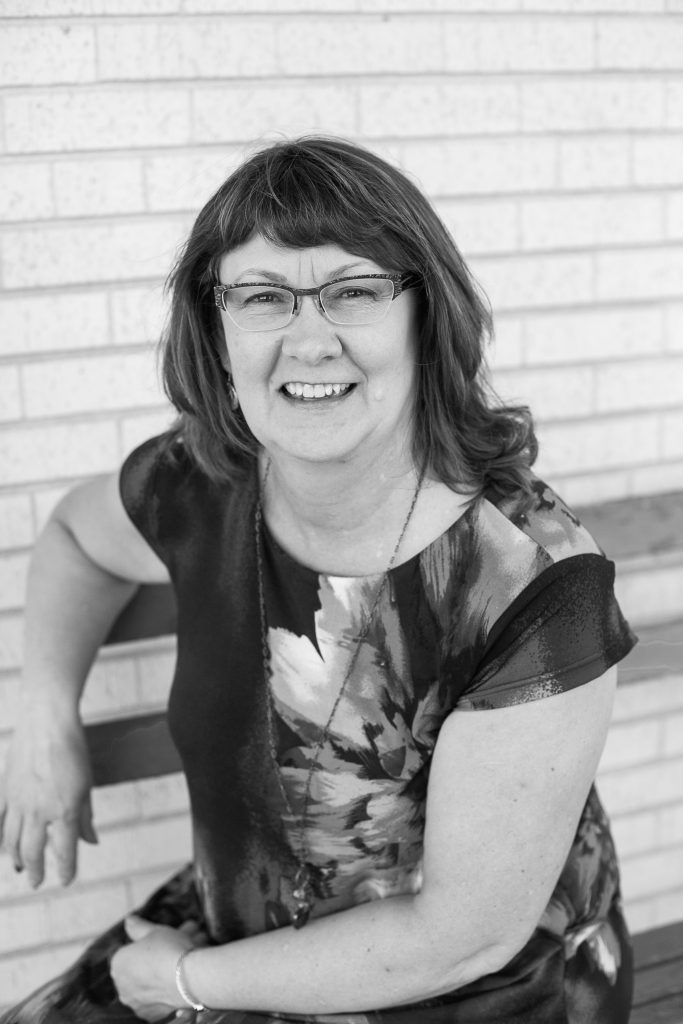Beth Demke’s office sits just of the gallery at Gateway to Science, just close enough to the exhibits that when she’s there, she can hear the sounds of kids discovering how science works. She can’t keep herself away from the sound of learning.
“I love seeing the kids. You’ll often find me on the oor, just watching,” she says with a smile. “There are times I step out because I’ll hear someone talking about an exhibit and wondering how it works.I’ll offer to help and it’s so great when you see the light go on for that child. I see that all the time. It’s great. I just love it.“
This is a job she has loved for more than 20 years. When Gateway to Science opened in November of 1994, Beth was a volunteer. The entire staff was volunteers back then.
“It is amazing to think we started all of this with volunteers,” says Beth. “It took so many volunteers, and they were all so willing to work.”
Gateway to Science started all because Frank Koch, a chemistry professor at Bismarck State Col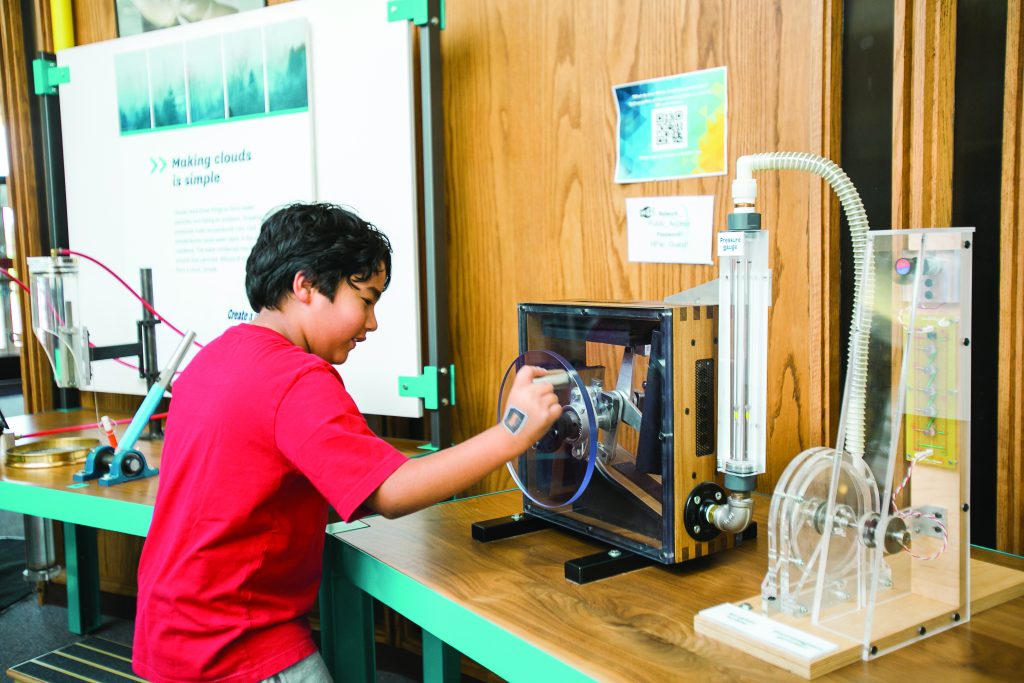 lege, had an idea.
lege, had an idea.
“Every year Frank had his chemistry students each develop an activity for kids. They presented them at Gateway Mall during National Chemistry Week every October,” remembers Beth. “It was basically a big science fair. It started Frank thinking we should go beyond one week a year. He wanted it to be much bigger than that.”
And soon it was, thanks to the formation of a perfect relationship. Frank’s lab assistant, Tina Stroh, was a Junior Service League member. She brought Frank and his idea to the group.
“There was a hunger in this community for something like this,” says Beth. “It was the perfect blend. We had a group of science professionals who really understood what it was we were trying to do with exhibits and programs and the learning. Our Junior Service League members knew how to organize—we knew bookkeeping, staffing, making sure everything was done correctly.”
That’s where Beth stepped in. Her business and human resources background helped get the science center off the ground. Although she was not in charge at the beginning, by December 1, 1995, Beth was hired as the full time director of Gateway to Science.
A DESTINATION
From 1994 until 2005, Gateway to Science was housed at the Gateway Mall. The name similarity was purely coincidental.
“The name ‘Gateway to Science’ came before we got space at Gateway Mall,” explains Beth. “Gateway to Science was Frank’s idea. He wanted the center to be a welcoming introduction, a gateway if you will, to science.
“Gateway Mall was a great place for us to start. It was a place where the public was already going. We got a lot of initial interest and people that would stop in as part of a shopping trip. It was easy to find.”
But Beth and her team soon realized they were outgrowing the space at Gateway Mall. They needed more space to branch out and to become a destination, not just a place where families stopped for a few minutes after a day of shopping. In January 2005, Gateway to Science opened in its new location at the Frances Leach High Prairie Arts and Science Complex.
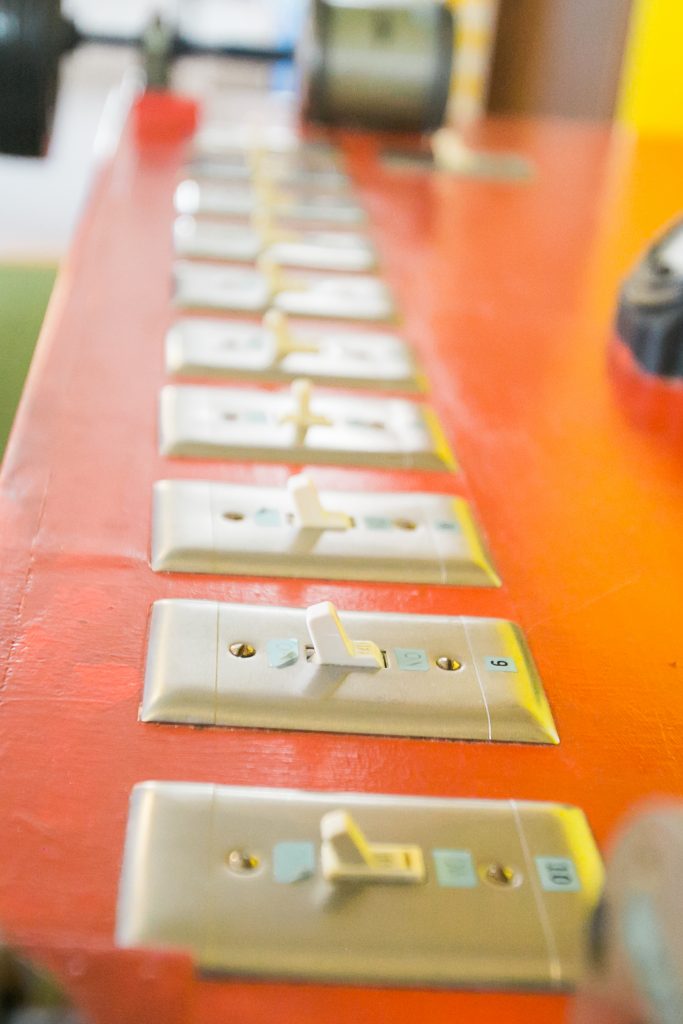 “This space seems larger, but at 3,200 square feet, it is exactly the same as what we had at Gateway Mall. The difference is in how the space is divided,” explains Beth. “The high ceilings and skylights also make it seem bigger. But the gallery space is the same.”
“This space seems larger, but at 3,200 square feet, it is exactly the same as what we had at Gateway Mall. The difference is in how the space is divided,” explains Beth. “The high ceilings and skylights also make it seem bigger. But the gallery space is the same.”
Beth says this space has served a purpose, and allowed Gateway to Science to attract more visitors. In the last five years, attendance at Gateway to Science has increased 106%.
“We were serving about 7,500 people a year when we were at the mall. In 2015, we served 27,928 people,” says Beth. “We need more space so we can serve those people better. Right now we have bigger groups than the space really allows. We are not breaking any fire codes, but we are not giving the best experience to our guests either. We have to limit field trips to an hour, because we’ve got another group coming in.”
Visitors to Gateway to Science are not just from Bismarck. During the 2015-16 school year, 54% of the field trips to Gateway to Science were groups from outside of Bismarck and Mandan. Gateway to Science is the only science center of its kind in North Dakota. Students come here from all over the state, including Grand Forks, Jamestown, Dickinson, Williston, Minot, and all the small towns in between. Groups from Montana and South Dakota have also made Gateway to Science a field trip destination. It is an especially popular destination for groups from smaller, rural communities.
“The smaller towns really make good use of us as a resource,” Beth explains. “There’s nothing like it in their town, or even in their school. We do everything hands-on so to do what we do here in a classroom setting, especially in a rural school, is just not possible.”
OFFERING MORE
But “doing what they do” at Gateway to Science is becoming more difficult in this space. That’s why plans are in the works to build a brand new science center.
“We have plans and we are in the process of raising money to build a new building near the Community Bowl,” says Beth.
That new building would be 65,000 square feet; 27,000 square feet of that would be gallery space for hands-on learning. To put that into perspective: the entire High Prairie Arts and Science Complex is 23,000 square feet.
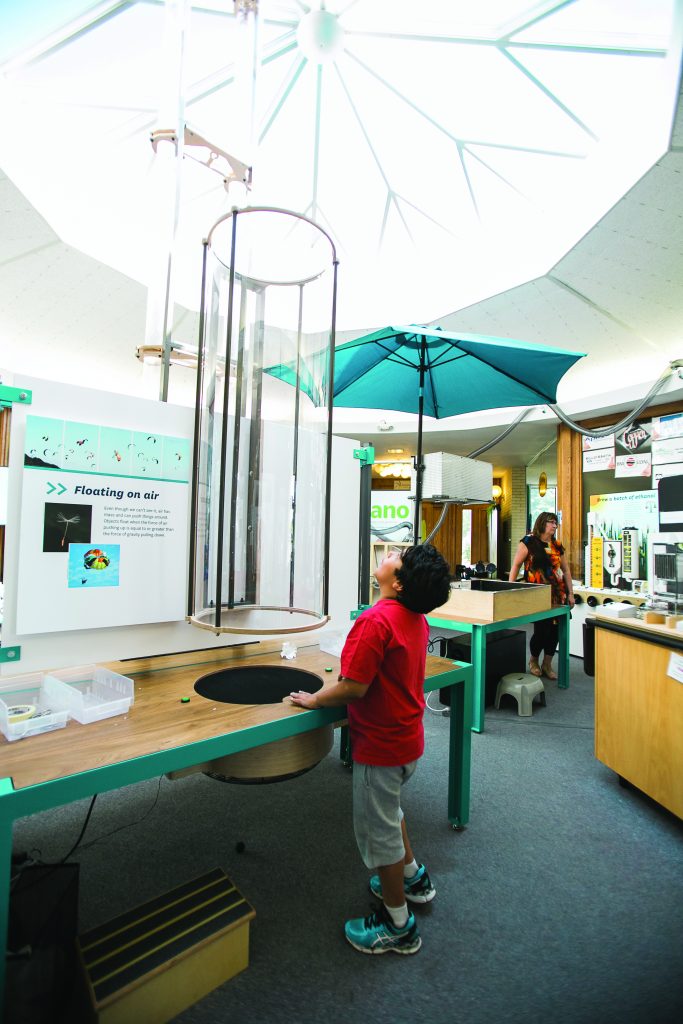 Every inch of space in the new building will have a purpose. Beth’s eyes twinkle when she shows the model of the proposed center. The staff at Gateway to Science is working with the Science Museum of Minnesota to develop new exhibits; there are several prototypes of new exhibits currently on display at Gateway to Science. Many of the current exhibits will be used in the new building as well. All the exhibits will revolve around the science happening in North Dakota.
Every inch of space in the new building will have a purpose. Beth’s eyes twinkle when she shows the model of the proposed center. The staff at Gateway to Science is working with the Science Museum of Minnesota to develop new exhibits; there are several prototypes of new exhibits currently on display at Gateway to Science. Many of the current exhibits will be used in the new building as well. All the exhibits will revolve around the science happening in North Dakota.
“We want to help kids connect their interest in science with potential career opportunities right here in North Dakota,” she says. “We want to do it in a subtle way, of course. For example, our agriculture exhibits will show visitors how high-tech farming is and how you could have a number of different ag-related careers. We also want to show kids basic science and what they could do with that.”
The new center also includes a laboratory classroom, named after Gateway to Science’s founding scientist Frank Koch, who passed away earlier this summer. The laboratory classroom will be equipped to serve high school and college level classes. Elementary students will also get lab experience in this new facility, something that’s not possible now.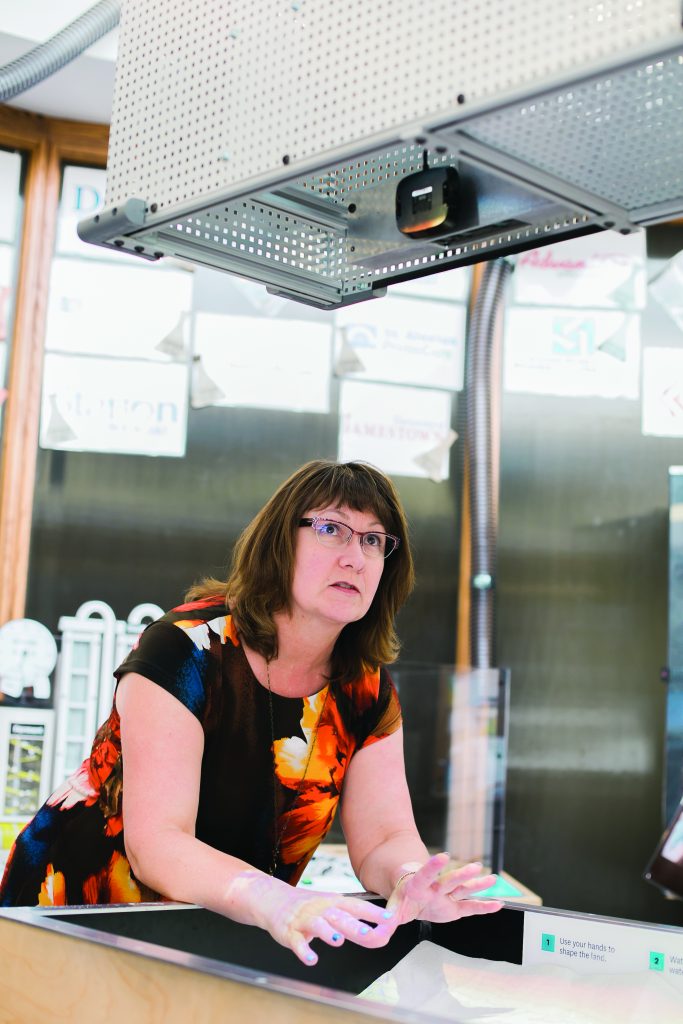
“Naming the laboratory classroom is just one way we are honoring Frank’s memory, legacy, and dreams,” says Beth. “Frank dreamed big, and we are so grateful for his big dreams and vision.”
When it comes to dreams, there is no question that Beth dreams big too. She knows her dreams carry a hefty price tag; a $36 million price tag, to be exact. That’s actually down from the original $40 mil- lion estimate.
“The goal is shifting a little because of a change in local market conditions. We are also doing a value engineering exercise. Everything about this project is science. We are looking at the whole building and changing materials and processes to save money where we can.”
But Beth has no doubt the funding will come. Half the money needs to be secured before construction can begin. Then, construction will take about 18 months.
BRINGING SCIENCE TO LIFE
Beth’s dream extends far beyond a new building. She dreams of instilling a love of science in every child and in their parents too.
“Learning needs to be lifelong, and it’s important for kids to see that their parents are still learning. And I think it’s important for parents to see what their kids are learning in a setting like this so they can continue the learning when they go home,” explains Beth. “Science is all about discovery. It’s asking questions and nding out the answers. If you come into a place like this where you’re asking questions, those questions don’t stop when you leave. They should continue. I know we’re not going to raise every kid to be a scientist, but we can instill a curiosity and an interest in the world in every kid.”
As for her own children, Beth did raise a scientist. Her oldest daughter, Sarah, is a biologist living and working in Minnesota. Katharine, her second daughter, is an artist, but also working to raise money for an arts and science pavilion in Sioux Falls, South Dakota, where she lives. Her daughters grew up at Gateway to Science.
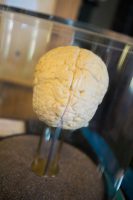 “Katharine was in kindergarten when we started Gateway to Science. She used to come to work with me,” says Beth with a smile. “Sarah worked here when she was in high school. I really think Gateway to Science helped shape their lives.”
“Katharine was in kindergarten when we started Gateway to Science. She used to come to work with me,” says Beth with a smile. “Sarah worked here when she was in high school. I really think Gateway to Science helped shape their lives.”
In much the same way, seeing science through her daughters’ eyes helped shape Beth, and inspires her still today to help others see the value of science in everyday lives.
“I really feel strongly about raising science literacy in the community. It’s not just something for kids. Everyone should understand basic science, because when you do, things just make sense. If you un- derstand chemistry, your cakes taste better. If you understand how to mix colors and how light refraction works, your art projects will look more beautiful. There is a lot of science that goes into everything we do.”
Beth feels fortunate to spend her days here, surrounded by science.
“I am not a scientist. I would have loved to have been one. I always enjoyed science and I was good at it. Here I get to be a scientist.”
To learn more about Gateway to Science, upcoming events, and the building plans, visit gatewaytoscience.org. You can also donate at that website. To see more of Jacy’s photos of Gateway to Science, click here.

